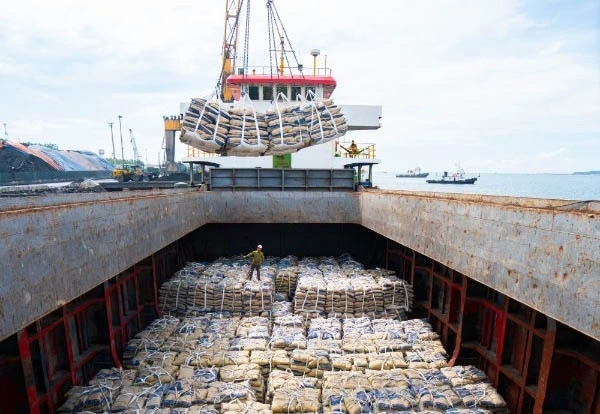In an extremely difficult situation, the period when the economy in general is suffering the consequences of a long time of unsynchronized development, many inadequacies in the policy mechanism, Vietnam's cement industry also has to bear the brunt of the crisis. enormous pressure from inadequate regulations, short-term monetary and credit policies, instability from domestic and foreign markets...

Summarizing opinions from experts, here are some suggested solutions that businesses in Vietnam's cement industry have been implementing to solve the current crisis:
1. Production optimization: Businesses are looking for ways to optimize production processes and improve technology to increase productivity and reduce production costs. This helps businesses enhance competitiveness and increase profits. In particular, there is the issue of using residual heat to generate electricity and using waste incineration to replace a part of fuel.
2. New product development: Cement businesses are looking for ways to develop new products and improve products to increase their competitiveness in the market. This helps businesses attract more customers and increase sales. Diversified products also help cement businesses enter many market segments, maximizing the applications of cement products in social life.
3. Finding new markets: Cement businesses are looking for ways to expand their markets and find new customers, including export markets. This helps businesses increase sales and minimize the impact of a domestic overproduction. Many projects in remote areas are approached by cement businesses to deploy and sell. Advocating for infrastructure works that use a lot of cement such as viaducts, concrete roads, concreting rural areas, islands...
4. Investment in research and development: Businesses are looking to invest in research and development to find new solutions and improve production efficiency. This helps businesses increase their competitiveness in the market and create products of higher value. Energy audit issues, find out the high energy consumption stage to improve correction. Cut through inefficient production steps. Enhance administrative automation, digitization, and use of large databases in production and sales operations.
5. Cooperation with partners within the industry: Enterprises are looking for ways to cooperate with partners to enhance competitiveness and increase profits. This helps businesses share costs and leverage different resources to create higher value.
Cement businesses can cooperate to share resources, equipment, facilities, finance... to optimize the process of bringing products to market. At the same time, there is a reasonable combination and division of market shares so that there is no overlap, waste or unfair competition, reducing the industry's overall profit level.
6. Support from the Government: The Government is studying to provide support policies to solve the crisis situation in the Cement industry, including financial support and tax reduction. Businesses can take advantage of these policies to minimize damage and increase their competitiveness in the market. But the signals are not clear yet.
The huge role of the Government in regulating the macro economy so that the Cement industry can escape, it is necessary to have the final advice of the departments and branches, including the Ministry of Construction. These are policies to remove capital, credit, real estate market or promote public investment. Besides, resolutely not for businesses to continue to invest in new cement projects, with unclear objectives, deployed in the near future.
These solutions are being implemented by businesses in the Cement industry to solve the crisis situation. However, in order to bring Vietnam's cement industry back to a competitive position in a normal way in the market, there needs to be close cooperation between businesses, the Government and related parties.